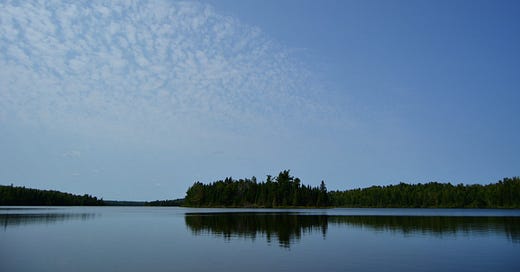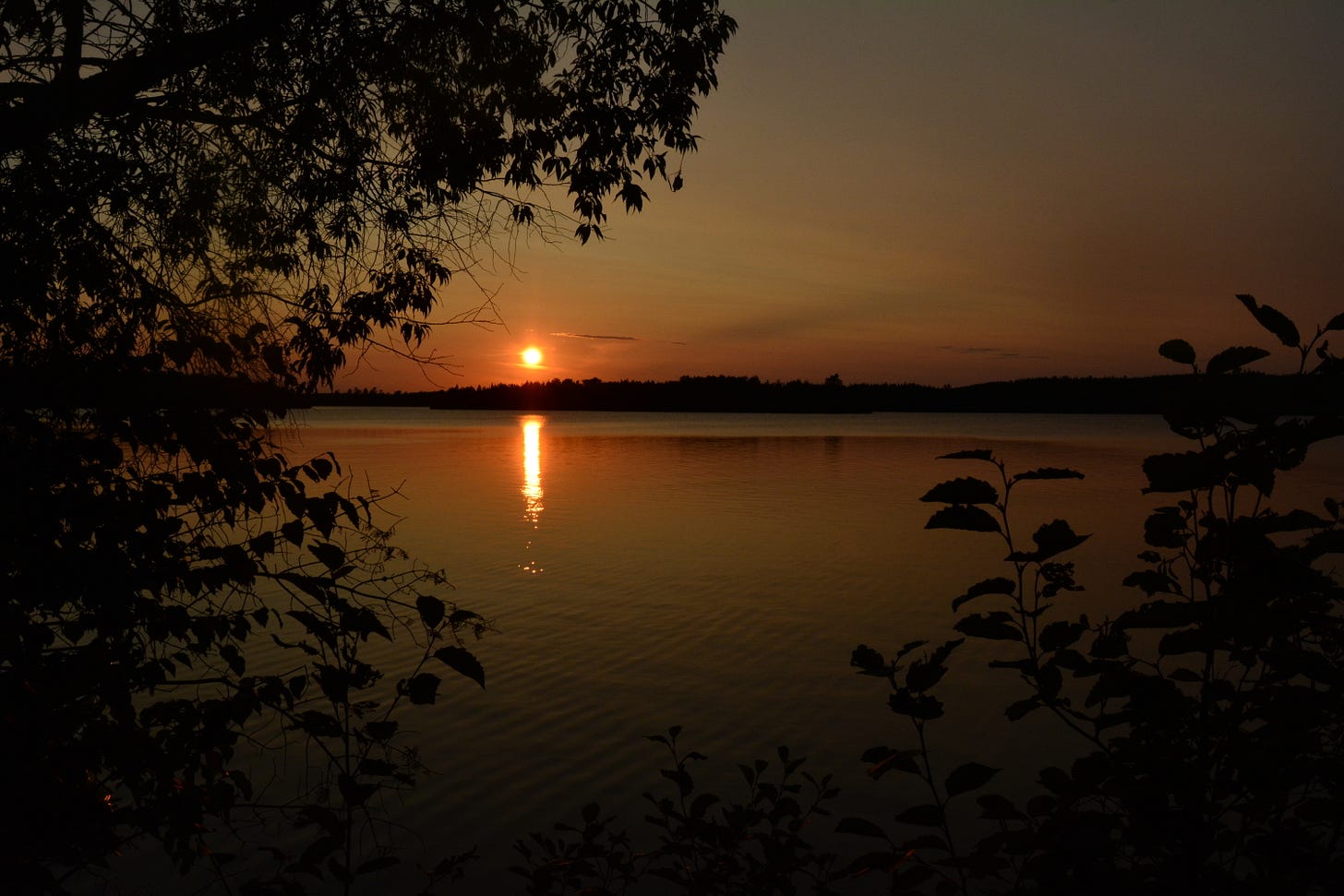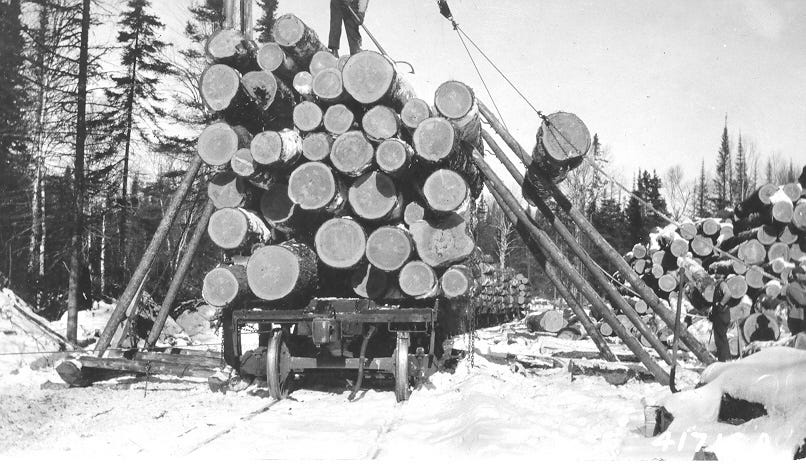Simple climate action // I S S U E # 5 0 // R E W I L D I N G
What does Hothouse mean to you? That’s the question we’ve been asking readers (and to so many new ones this month, welcome!). Here’s how one reader explains Hothouse to their friends: “A weekly climate newsletter with actions that ordinary people can take to make a difference.” We couldn’t say it better ourselves.
As we approach our first birthday in September, our readers are the best guide to what comes next for Hothouse. So we may send you a 60-second survey to get your thoughts. We aim to make action easier. How we do it is up to you.
That’s why we deliver climate stories with rigorous analysis of what works (and what doesn’t), and guides about taking the smallest next step—or the largest. As one reader put it, they’re looking for “a little bit of hope for the future of our planet.”
This week, Erik Ness takes us to the Boundary Waters. With a quarter-million visitors each year, it’s America’s most popular wilderness area. We explore what it means to rewild our protected places, and ourselves. We’ll then see you on Sept. 4 with our first issue on the future of seafood after a short summer holiday.
Mike Coren
mj@hothouse.solutions
🌞 Welcome to our week in climate solutions 🌧
Our newest section is here. We’ve summarized the week’s most important solutions news in a hot minute. Like it? Want something different? Give us a shout on Twitter, Instagram, or Facebook. We’re here for you, Hothousers.
July was an extreme month in America’s West (a “triple threat” of record heat, drought, and wildfires), while the Northeast had its wettest July ever. But progress advanced on a few fronts:
Renewables now supply 20% of the European Union’s electricity and Scotland switched on the “world's most powerful” tidal turbine.
Volvo built the world’s first vehicle from ‘green steel’ using fossil-free hydrogen instead of coal (although making enough emission-free hydrogen remains tough).
Airlines once led on zero-emission targets. Then they delayed. Now the US may impose a 2050 deadline (and aims for half of 🚙 to be EVs by mid-century ).
Robot farmers are cultivating a Garden of Eden—or an agrarian dystopia (depends on who you ask). Wired goes down on the farm.
Burn Notice
Leaving no trace in the age of climate change
By Erik Ness
“At the risk of being kidded about setting myself up as the Emily Post of the bush country, I am nevertheless going to attempt, foolhardy though it may seem, to set down in the short space of an article, some of the elements of good woods manners.”
— Sigurd Olson, “Wilderness Manners” (1945)
A poignant wanderlust carried more people than ever into the great outdoors in 2020. Parks and green spaces everywhere were often at, or over, capacity as a weary public sought refuge from the pandemic. According to anonymized GPS data, every destination, from retail to office to restaurants, saw a drop in traffic. All, that is, except one: parks.
Our wild havens, stressed from the crush of traffic, have begun to show the wear. Some of the damage is obvious: vandalism, tree cutting, trash. Historic stretches of trail, including sections of the Appalachian Trail, are crumbling as visitor capacity exceeds design. Public wild places already suffer from decades of rising use and chronic underfunding. National parks, forests, and wilderness areas may owe much to American innovation, but they're experiencing a rough transition to the 21st century.
In his 1945 essay “Wilderness Manners”, outdoors writer Sigurd Olson advises backcountry enthusiasts to cut poles and pine boughs away from camp, rake campsites, and bury their trash. But he likely did not imagine 4 million Americans lining up to enter Yosemite every year.
What Olson did foresee was a future of wilderness “as a source of physical and spiritual rejuvenation...perhaps more of a spiritual than a physical experience.” One of Minnesota’s most passionate conservationists, he called canoe country the “singing wilderness.” He understood rewilding at the scale of lakes and forests, and also at the level of our psyche.
After years of guiding the lakes and woods on the border between Canada and the US, Olson joined efforts to establish the Boundary Waters Canoe Area Wilderness. Officially designated in 1978, this iconic million-acre Minnesota landscape is one of the few places in the country outside Alaska where you can travel for days by canoe in deep wilderness. At night, you might catch the mystical pulsing of the Northern Lights while listening to a chorus of gray wolves.
Yet one hundred years ago, the Boundary Waters were ragged, second-growth forests. The lumberjacks who inspired the mythology of Paul Bunyan had turned the old-growth pine forests of the North Woods into billions of board feet to build the young cities of the Midwest.
To reimagine the North Woods for wilderness, rather than profit, was an early step on the road to America’s rewilding—and a different American Dream.
Leave no trace
Last year, the Forest Service recorded “unprecedented visitation” and “an unacceptably high amount of resource damage” to the BWCA. Other environmental concerns loom over the region: Ojibwe tribes lead the struggle against the controversial Line 3 tar sands pipeline, while two proposed sulfide-ore copper mines threaten headwaters. Complicating things, the landscape itself is change with the climate. How do you save a forest when the cast of critters and trees keeps changing?
In less than a century, one ecologist worries, climate-driven trends could transform this boreal paradise into something more like Kansas. Droughts could lead to catastrophic fires that drag into September. A dry winter, followed by torrential spring rains would sweep soil into waterways by the gullywasher. Smaller and shallower lakes become more prone to algae and overgrowth. Invasive species flourish. Particularly hot summers lead to unprecedented fish kills. Each new extreme sets the stage for more changes.
One part of this scenario is already unfolding. With the Boundary Waters region locked in a drought not seen since Dust Bowl days, fires led Canada to shutter its sister park just across the border in mid-August, with the BWCA closing completely just days later for the first time in 45 years. With almost no rain, berries are scarce. Hungry bears have become bolder, approaching campsites in search of food. To protect campers and bears alike, in late July the Forest Service issued new food storage protocols.
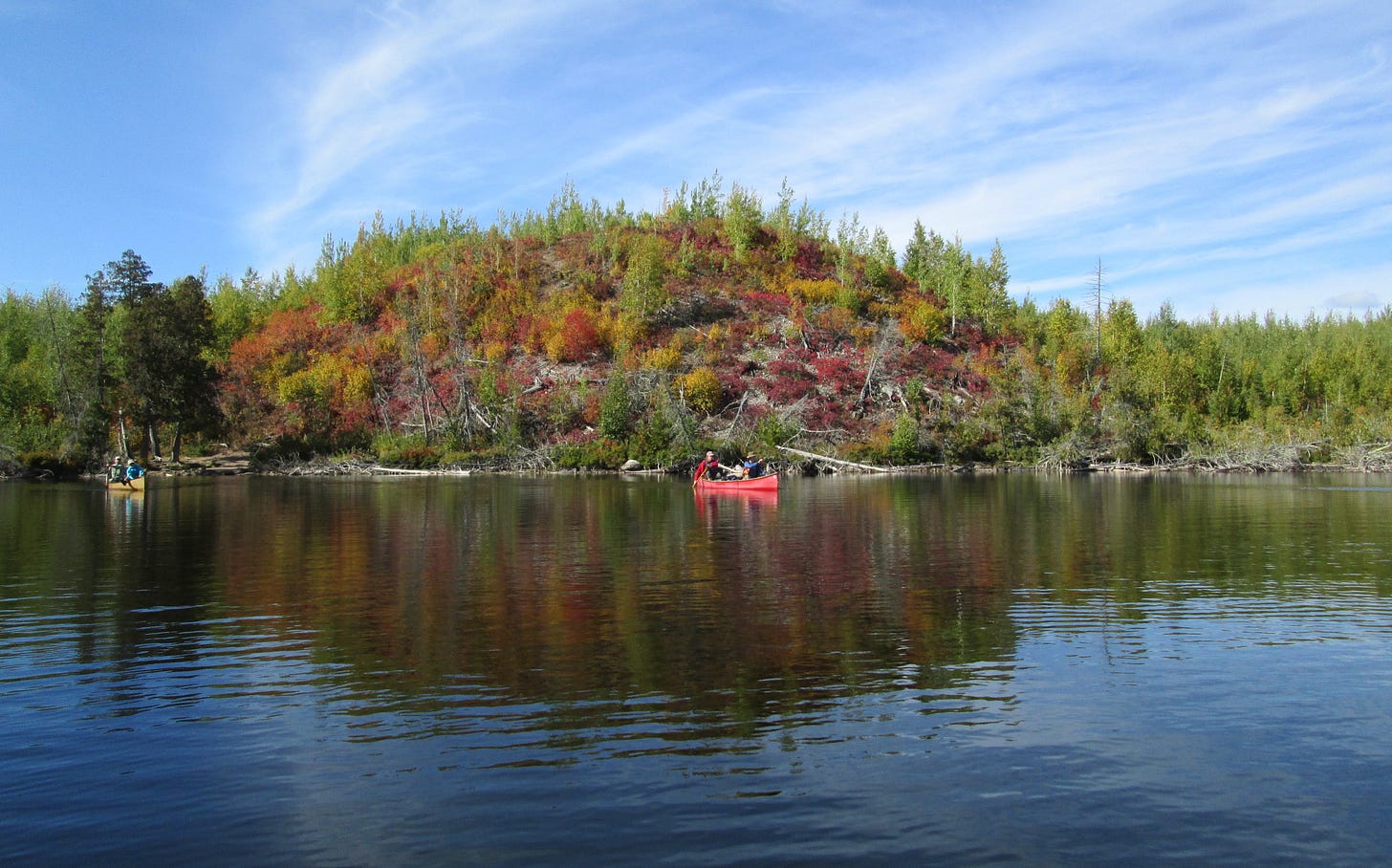
As a regular visitor to canoe country, I monitor news and conversation about the area. When the food storage order was announced (to keep bears wild and away from humans), there was an online undercurrent of disdain for this new “federal mandate,” even among people who clearly care for this jumble of rock, water, and wood. This attitude extends to some of the most important rules governing the park, such as Leave No Trace—the guidance to “Leave nothing but footprints, take nothing but pictures.”
About 18 months ago, as partisan rancor intensified in the US, any mention of climate change on the forums disappeared almost completely. Even seemingly little things are hard to talk about. On the forum, I recently reminded a Scout Troop, who had proudly posted pictures of a rebuilt fire pit, that removing rocks from the beach violated Leave No Trace guidelines. People got angry. “You can put your rule book away and give them a break!” scolded one man. “[Y]our MILITANT stance on LNT is not necessary,” another yelled. A third called me an “LNT nazi.” Many people congratulated and thanked the troop.
But rocks really aren’t so little: they hold the soil, which holds vegetation and seeds for regrowth, says Cathy Quinn of the Superior National Forest’s Gunflint ranger district. Her crews are constantly deconstructing large fire pits, making them smaller. Meanwhile, visitor activity contributed to reducing campsite trees by 44% between 1982 and 2014, and new tree seedlings are failing to germinate or survive.
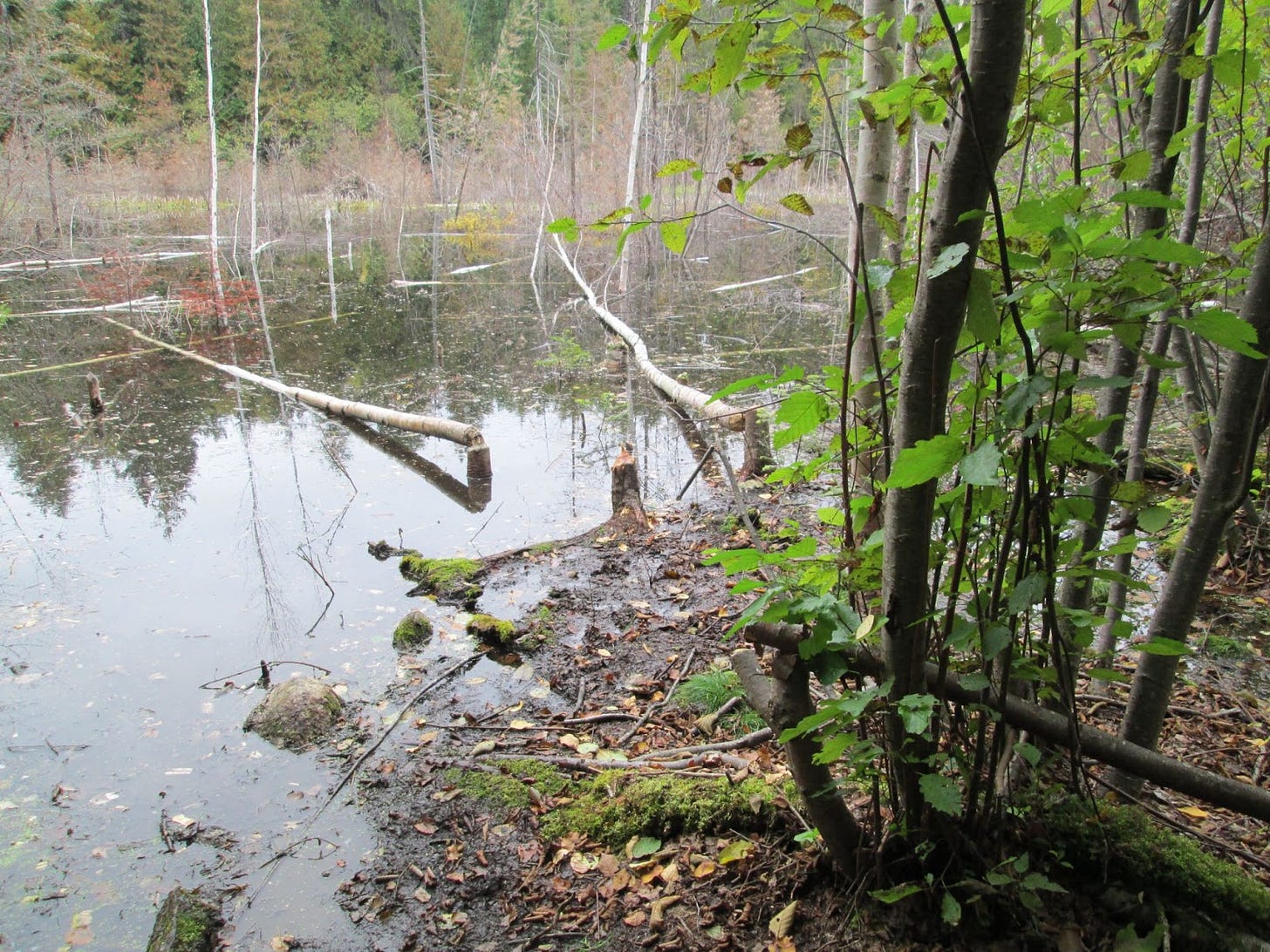
For many visitors, ritualized family traditions are more important than Leave No Trace. There’s a primal beauty in that. They do things “how dad taught me.” And any suggestion to change that behavior can feel like an attack.
Yet even as smoke from Canadian fires smothered the region this summer, we still didn’t talk about why—or about what’s amplifying the drought. It’s a blind spot across the country. Following the extreme heat of June, Colorado journalist Chase Woodruff tabulated mentions of climate change in his state’s local news coverage. Of 149 articles, only 6 mentioned climate change.
But living in denial or refusing to change is no longer an option if we want to save our signature landscapes. Nobody who has paddled the Boundary Waters wants to see it turn into Kansas—not myself, not the Scouts I criticized, not those who attacked me over Leave No Trace rules.
Keep all the pieces
The mythical Round River runs somewhere in these great North Woods. As the tale goes, Bunyan and his crew get stuck on that river which, magically, winds around back to where it began. Aldo Leopold reimagined the story in an essay accompanying his 1949 land ethics classic A Sand County Almanac that ended up inspiring the founding generation of conservation biologists:
“The last word in ignorance is the man who says of an animal or plant: ‘What good is it?’ If the land mechanism as a whole is good, then every part is good, whether we understand it or not. If the biota, in the course of aeons, has built something we like but do not understand, then who but a fool would discard seemingly useless parts? To keep every cog and wheel is the first precaution of intelligent tinkering.”
That’s the famous part about the myriad mysterious moving parts of any ecosystem. But Leopold warned that we still hadn’t grasped the outsized importance of all those small cogs and wheels. “American conservation is,” he wrote, “still concerned for the most part with showpieces.”
With climate change bearing down, we face the possibility of losing entire landscapes, including the showpieces we thought protected long ago.
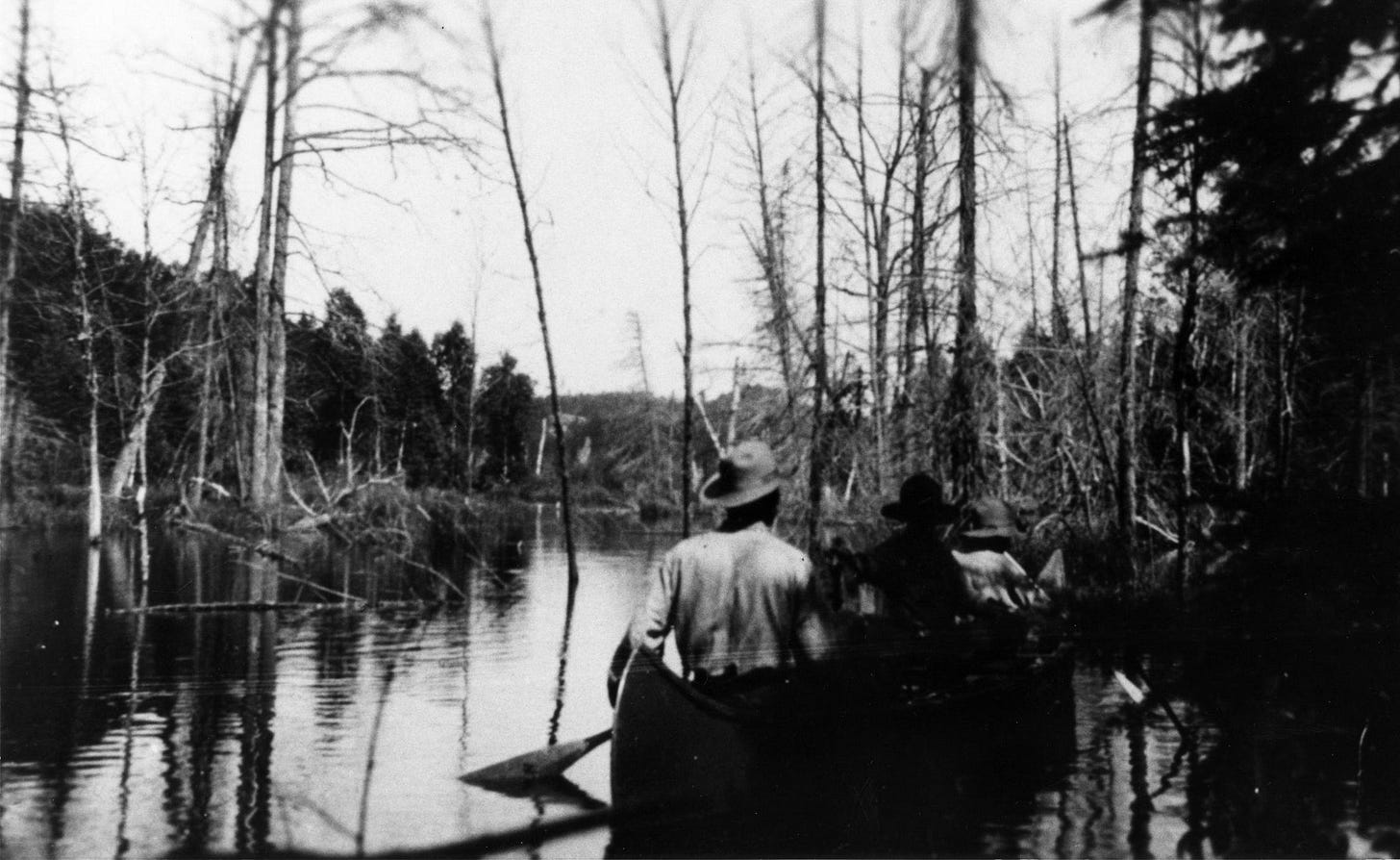
Rewilding is a potential remedy, an ecological promise. Each cog and wheel contains its own seed for ecosystem recovery. Shielding those “small cogs and wheels” from fire and hard times is one of the best ways for individuals to act in the face of such an enormous challenge. In our own lives, the small cogs and wheels are the seeds we can plant, the levers that we can pull, the changes that we can make to buffer wild nature from the worst of climate change.
Maybe it’s time, for example, to stop building fires in the Boundary Waters. We already know that the culture of the campfire is grinding down virtually every campsite: The more extensive that corrosion, the more likely invasive plants take hold in the disturbed margins. Long walks to gather wood just spread these time bombs deeper into the woods.
It’s a deeply practical solution, bound to be deeply unpopular. It would also be deeply symbolic for a planet tilting towards conflagration. At the very least, we should talk about it. Maybe there’s a way to save both the campfire and the climate, but we won’t figure it out unless we try.
Thanks for joining us on our month of Rewilding. What task do you wanna do to help rewild our home? We’ve curated resources for you in the links below for however rewilding calls you. 🌵🌻 Take our poll below and see what’s “Recommended for you”:
Local rewilding is my jam. Let's restore a place near me. ☀️🌱
I'd like to support the 30x30 initiative. Contact my local representative. ☎️ 🏞🌅
Like what you’re reading? Share Hothouse with a friend (or many)!
Hothouse is a weekly climate action newsletter written and edited by Jemima Kiss, Mike Coren, and Cadence Bambenek. We rely on readers to support us, and everything we publish is free to read.

